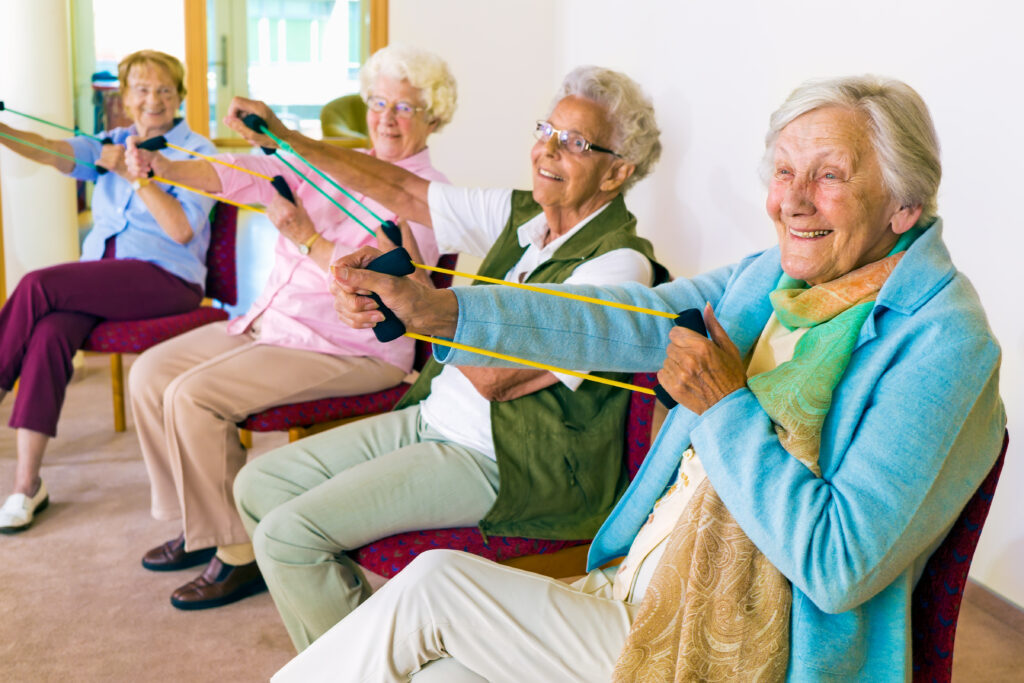Falls remain one of the most serious health risks for older Australians, particularly those living in residential aged care. Each year, more than 144 000 older people are hospitalised, and more than 6 000 die from fall-related injuries. For many, the consequences include loss of mobility, independence and quality of life.
The latest update to Cochrane’s landmark global review, Falls prevention for older people in care facilities, provides fresh evidence on strategies that work. The findings are particularly relevant for clinicians who support older people in aged care, or who provide advice to families and facilities.
“We know that falls are one of the most common health risks facing older people in aged care homes here in Australia and around the world,” says lead author Dr Suzanne Dyer, Senior Research Fellow at Flinders University. “The latest evidence shows that ongoing exercise, a dairy-rich diet and vitamin D supplementation are among the most effective measures to reduce and prevent falls.”
“We analysed over 100 clinical trials involving 69 000 residents across 25 countries to update our 2018 review, which has been the go-to review for GPs, geriatricians, policy makers and families wanting to support aged care residents and inform falls prevention programs and policies worldwide,” says Dr Dyer.
“This update sets out key findings that can inform clinicians, carers and families on how to support their patients and loved ones living in aged care facilities.”

The Cochrane review highlights four key focus areas:
Vitamin D: a simple, effective measure
Vitamin D deficiency is widespread in aged care, as many residents’ have very limited time spent outdoors. As in the earlier Cochrane reviews, supplementation was found to be a straightforward and effective intervention.
“Most older Australians in care have low vitamin D levels” Dr Dyer explains. “The latest evidence found the addition of vitamin D supplements reduced the number of falls. Supplementation improves muscle function, helping prevent both falls and fractures.”
“For clinicians, the take-away message is simple: daily or weekly vitamin D supplementation should be routine in residential aged care, unless contraindicated.”
Ongoing exercise in aged care: an essential intervention
One of the review’s most significant findings is that ongoing tailored exercise programs can significantly reduce the risk of falls in aged care homes.
“When it comes to exercise programs to prevent falls, the key word is ‘ongoing’,” says Dr Dyer. “If you do a six-week or two-month program, you can’t expect it to still be reducing falls months later — the effect disappears unless you keep exercising.”
Programs of low to moderate intensity, delivered in groups by physiotherapists or trained staff, were shown to be particularly effective, including for residents with dementia who are able to participate.
“We know that many aged care homes provide only brief, seated group sessions of around 20-30 minutes, once or twice a week,” says Dr Rik Dawson, Cochrane review co-author and president of the Australian Physiotherapy Association. “These are not intense or regular enough to make a difference.”
“However, the latest global evidence is clear. Exercise is an effective and essential component of falls prevention, so we need to see more of it. This is backed up by the latest Australian research as well. The SUNBEAM Trial reported a 55% reduction in falls with physiotherapist-led strength and balance training. And more recently, the TOP-UP study published in the Medical Journal of Australia this month, showed that telehealth-delivered physiotherapy can reduce falls, improve mobility and quality of life, and lower costs.
The challenge now is to embed ongoing, tailored exercise as part of routine care and for clinicians to encourage those willing and able to take part.
Individual assessments and tailored care
Cochrane researchers also took a closer look at multifactorial programs, which combine several strategies based on individual resident risk profiles. They found programs that are carefully tailored to individual needs and that actively involve care staff are more effective.
“When multifactorial programs are tailored to individual circumstances and actively involve staff, they effectively reduce falls,” says Dr Dyer.
Clinicians play a critical role in ensuring interventions recommended after falls risk assessment are implemented and appropriately tailored. Risk assessment should occur routinely and include consideration of:
- personal risks including medication optimisation and assessment;
- environmental risks including environmental hazards and need for assistive aids;
- exercise programs for those willing and able; and
- tailoring of interventions as necessary, for example considering appropriateness or modifications required for residents living with dementia.
Clinicians should also engage with facility staff to ensuring appropriate delivery of the falls prevention interventions.
Improving diet: 3.5 servings of dairy
The latest Cochrane evidence puts diet squarely in the falls prevention picture, finding that menus that provide sufficient protein and calcium are critical.
“Daily menus should include at least 3.5 servings of dairy foods – so milk, yoghurt and cheese” says Dr Dyer. “Involving a dietician in designing menus to ensure these inclusions can reduce the number of falls and hip fractures.”
“A large Australian trial involving more than 7 000 residents across 60 aged care homes showed that increasing daily dairy servings from about 2 to 3.5 servings led to a 33% reduction in fractures and 46% reduction in hip fractures – and the food cost around 66 cents per resident per day to implement.”
For doctors, discussing nutrition as part of routine care and considering whether dietary plans provide sufficient protein and calcium is important.
Looking ahead
“With the right mix of strategies, it’s possible to reduce falls and help older people in care stay safer and more independent,” Dr Dyer concludes. “We are now updating the equivalent review for falls prevention in hospital settings, where individually tailored approaches and integration with the local setting are also important, and look forward to sharing that later this year.”
“With Australia’s population rapidly ageing and the number of people over 80 expected to triple by 2050, translating this evidence into routine practice is essential. For doctors, the challenge is to reinforce proven falls prevention strategies in collaboration with families, facilities and allied health colleagues.”
Shauna Hurley is a freelance writer and science communications adviser for Cochrane Australia.
Subscribe to the free InSight+ weekly newsletter here. It is available to all readers, not just registered medical practitioners.

 more_vert
more_vert